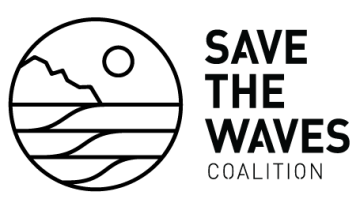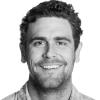
World Surfing Reserves

A surf ecosystem is more than a wave: it’s the geophysical components, the plants and animals, and the human interactions that make a place special. Protecting surf ecosystems in turn protects marine habitats, maintains the integrity of the wave, and safeguards local livelihoods.
World Surfing Reserves (WSR) act as a model for preserving wave breaks and their surrounding areas by recognizing and protecting key environmental, cultural and economic attributes in coastal communities.
WSRs represent a global network of designated surfing reserves that are managed, implemented, and protected by local communities. Every year, one new World Surfing Reserve is selected from a competitive pool of applicants by an independent council.
The Bahía de Todos Santos World Surfing Reserve was designated in 2014 and have implemented multiple projects protecting the ecosystems and waves in the region and is an excellent example of how the World Surfing Reserve can protect the coastline.
Context
Challenges addressed
The challenges to implementing the World Surfing Reserve and the associated Local Stewardship Plan include long-term funding sources, local capacity, local politics, and the scale of the threats facing the ecosystem.
Location
Process
Summary of the process
Each building block is essential to the entire project. It all starts with the Application and Selection Process which selects which region is best equipped to function and implement the tenets of the World Surfing Reserve program. Throughout the application process, a strong relationship is built between Save The Waves and the local community stakeholders and together the Coalition Building takes shape as alliances are built within the community and with the staff of Save The Waves Coalition. As the coalition is built, the necessary relationships and identified goals are in place to develop the Stewardship Planning Process as well as to pursue other projects which enhance the character of the World Surfing Reserve such as Surfonomics. The Surfonomics project and Stewardship Plan form a solid foundation of evidence and management scheme so the World Surfing Reserve can pursue their conservation projects and initiatives.
Building Blocks
WSR Nomination Process
Each year, Save The Waves accepts one new World Surfing Reserve from surf communities all around the world. The application process requires significant work from local communities and their inquiry is based on the following core criteria:
1) Quality and consistency of the wave(s);
2) Important environmental characteristics;
3) Culture and surf history;
4) Governance capacity and local support;
5) Priority Conservation Area
Each application is reviewed by an indepedent Vision Council made up of professionals in the conservation, business, nonprofit, and surf fields. Once the World Surfing Reserve is selected based on the rigorous criteria, they undergo the Stewardship Planning Process and the other building blocks to formally dedicate the World Surfing Reserve.
Enabling factors
- Score highly in the WSR criteria (see above)
- Excellent local support and capacity to carry out conservation projects
- Excellent communication between Save The Waves and the applying World Surfing Reserve
Lesson learned
- Local support is absolutely essential in a successful application
- A diverse set of stakeholder involvement is needed for the program
Coalition Building
STW has demonstrated success as a leader of surf conservation and coalition building. We create strategic coalitions to carry out conservation projects at World Surfing reserves that have real impacts. In selecting partners on the ground, we find common interests, fill capacity gaps based on strengths, and set common goals to have an outsized impact in the places we work. Through this work, STW has built a reputation of trust working with local partners around the world.
For World Surfing Reserves and at Bahia de Todos Santos, we built a coalition between local surfers, environmental NGO's, local government agencies, businesses, artists and neighborhood groups to create holistic vision for the protection and enhancement of the region and coastline.
Enabling factors
Conditions that are imperative to this building block include the development of a relationship between Save The Waves and leaders of the World Surfing Reserve effort, community cohesion and capacity in the World Surfing Reserve, and inclusive and diverse stakeholder engagement process that invites many voices to the table.
Lesson learned
We have learned many lessons through years of building coalitions.
1. Communities must be at the heart of any conservation project or it will not work.
2. A coalition must include a broad and diverse group of actors in the community.
3. A coalition must share power equally and must also have an agreed upon local leader or institution.
Resources
Stewardship Planning Process
A Local Stewardship Council (LSC) is the main representative of a World Surfing Reserve and is in charge of implementing the Local Stewardship Plan. The LSC works together with Save The Waves Coalition to Protect, Steward, and Defend their surf ecosystem.
LSC members work on the ground and with the local community to carry out activities that result in the long-term conservation of the reserve as well as celebrate and honor the tradition of surfing and ocean recreation. The Stewardship Planning Process brings together the LSC and important community members to map out the the critical threats to the region and come up with long term goals and objectives for permanent protection.
The Stewardship Planning Process generally follows the outline in "Measures of Success" that includes building a Conceptual Model, developing a management plan that identifies goals, objectives, actions and timelines based on the threats to address.
Enabling factors
Enabling Factors include:
- A well developed Local Stewardship Council
- Support from the local government or municipality
- Maps of the region and coastline
- A well developed inventory of threats to the environment
- A comfortable physical meeting space
Lesson learned
Our lessons learned from this project include:
- Relationship building between the stakeholders is key
Resources
Surfonomics
“Surfonomics” aims to document surfing’s economic contributions to local and regional economies. Through Surfonomics research, we determine the economic value of a wave and surfing to local communities to help decision makers make better choices to protect their coastal resources and waves.
Using a beach survey of surfers in San Miguel, Ensenada, we were able to quantify that an average tourist spends approximately $111 US dollars a day. As the average surfer spends 10 days per year in the area, it is calculated that a visiting surfer spends $1,151 US dollars a year in Ensenada.
These figures show that surfing helps drive the local economy of Ensenada and that decision-makers must take into account the importance of the surf zone in terms of coastal management.
Enabling factors
- Volunteers to carry out the survey instrument
- Partnerships with academic institutions
- A broad coalition of stakeholders is needed to carry out a rigorous academic study like Surfonomics. Relationships and trust must be built with local hotels and rental agencies, business owners, tourism agencies, surf shops and businesses, and most importantly, the surf community itself. All of these stakeholders must share information and participate in the study in order to get an accurate picture of the economy of surf tourism in a given area.
Lesson learned
Key lessons include:
- Understanding the economic contribution of surfing is key to getting stakeholders to agree on conservation initiatives.
- Running a surfonomics study can help practitioners understand the attitudes and perspectives of visitors to the area.
- Surfers spend a significant amount of time and money traveling and bring big economic contributions to local communities.
Impacts
The impacts the World Surfing Reserves program are numerous including the protection of world class waves, the revitilization of the local economy from surf tourism, improvements in water quality and the impacts of plastic pollution, and the protection of the flora and fauna that exist in the reserve.
Bahia de Todos Santos World Surfing Reserve has protected the last intact watershed in the region, helped reduce single-use plastics on the coast, protected surf spots from industrial development and pollution, and ensured beach access for local surfers and visitors among many other accomplishments.
Beneficiaries
The beneficiaries include the community of Bahia de Todos Santos and Ensenada, businesses, tourists, surfers, the natural environment, endangered and threatened species, and the surf economy.
Sustainable Development Goals
Story
On June 5th, World Environment Day 2018, Jorge Emilio Martinez, a member of the Ensenada City Council, presented a proposal to eliminate the use of plastic bags and disposable utensils in commercial establishments in every town of the municipality of Ensenada. In addition to the Bahia de Todos Santos World Surfing Reserve’s support, this project gathered 100,000 signatures and had the backing of the UN Environment Mexico and several civil society organizations such as Pronatura Noroeste, Terra Peninsular, Pro Esteros, and Manos al Mar.
On June 17th, the Ensenada City Council approved this historic measure which was implemented January 1st, 2019. With the tireless efforts of members of the Bahia de Todos Santos World Surfing Reserve, the coastline and ocean are looking towards a future free from plastic pollution.














